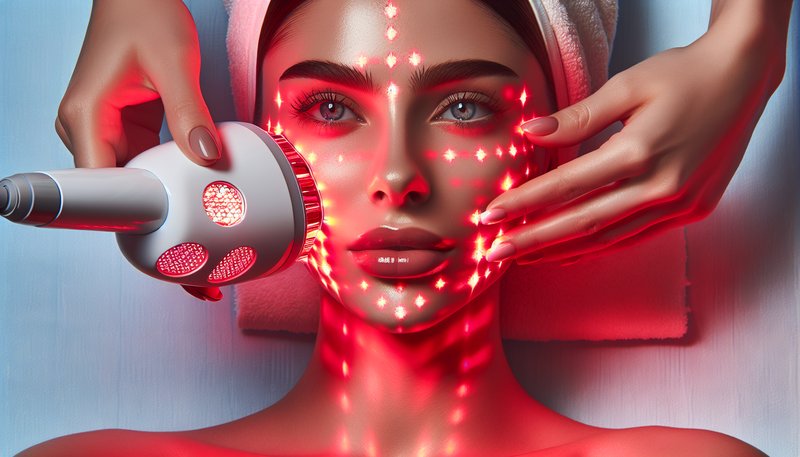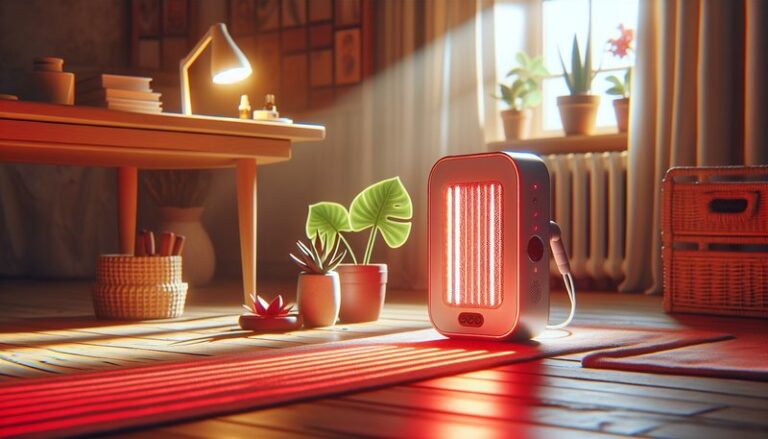Is Red Light Therapy Good For Your Face?
Is Red Light Therapy Good For Your Face?
Have you ever wondered if red light therapy could be the key to healthier, younger-looking skin?
In this article, we’ll explore what red light therapy is, its benefits for facial skin, its feasibility, precautions to consider, alternatives available, and whether it’s a recommended option for skincare. Whether you’re seeking to reduce wrinkles, improve skin tone, or aid in healing blemishes, read on to discover if this innovative treatment is right for you.
Key Takeaways
- Red light therapy offers several benefits for facial skin, including improved skin texture and reduced inflammation.
- It’s a non-invasive treatment option with little to no downtime.
- Always consider individual skin types and conditions before starting treatments.
What is Red Light Therapy?
Red light therapy (RLT) involves the use of low-level wavelengths of red or near-infrared light to penetrate the skin. This technology is often employed in various settings, from dermatology clinics to at-home devices. The therapy works by stimulating cellular function, promoting healing and regeneration.
Discover our insights Is all red light therapy the same?
Developed from research in the late 20th century, red light therapy has gained popularity as a holistic option for addressing numerous skin issues. It is often touted for its ability to stimulate collagen production, enhance skin tone, and reduce signs of aging.
What are the Benefits of Red Light Therapy?
Many individuals seek red light therapy for its wide-ranging benefits. Here, we will dive deeper into the significant advantages it offers for facial skin.
Enhances Collagen Production
One of the primary benefits of red light therapy is its ability to boost collagen synthesis. Collagen is essential for maintaining the skin’s elasticity and firmness. Studies have shown that RLT can stimulate fibroblasts, the cells responsible for collagen production, leading to a noticeable reduction in fine lines and wrinkles.
Improves Skin Texture
Red light therapy can significantly enhance overall skin texture. This treatment helps to reduce rough patches and uneven skin tone, promoting a smoother, more radiant complexion. Many users report softer skin and diminished appearance of pores after consistent RLT sessions.
Reduces Inflammation and Redness
For those with sensitive skin or conditions such as rosacea and acne, red light therapy can be a soothing treatment. The wavelengths reach deep within the skin, reducing inflammation and redness significantly. As a result, many individuals find relief from discomfort associated with inflammatory skin conditions.
Read the latest on Does Red Light Therapy Reduce Facial Fat?
Aids in Healing Blemishes
RLT is known for its healing abilities. It helps accelerate the regeneration of damaged skin and can be beneficial in minimizing scars from acne or other injuries. Moreover, it has been shown to reduce the appearance of post-inflammatory hyperpigmentation, leading to a more even skin tone.
Stimulates Cellular Repair and Regeneration
Another compelling advantage of red light therapy is its role in cellular repair. The therapy improves mitochondrial function, which is crucial for energy production in cells. This enhances overall skin vitality and encourages quicker healing of damaged tissue.
Is it Possible to Use Red Light Therapy at Home?
Yes, using red light therapy at home is entirely feasible and increasingly popular. Many devices, from handheld units to full-face masks, are designed for safe, at-home use. These devices often utilize lower power settings compared to professional equipment but can still yield substantial benefits with consistent use.
What are the Advantages of At-Home Red Light Therapy?
Using red light therapy at home offers several distinct advantages:
- Convenience: At-home devices allow for flexible use at your convenience, eliminating the need for appointments.
- Cost-Effectiveness: Investing in a device can save money compared to multiple clinic visits over time.
- Comfort and Privacy: Using therapy in the comfort of your own space can make the experience more relaxing and accessible.
What are the Disadvantages of At-Home Red Light Therapy?
However, there are also some disadvantages to consider:
- Variability in Results: Home devices may have different wavelengths and intensities, affecting treatment efficacy.
- Learning Curve: Users may need to educate themselves on proper usage to achieve optimal results.
- Time Commitment: Achieving results may take longer compared to professional treatments due to lower intensities.
What are the Things to Consider Before Red Light Therapy?
Before engaging in red light therapy, certain factors should be considered to ensure a safe and effective experience.
Skin Type and Condition
Different skin types respond uniquely to treatments. It’s essential to assess your skin’s characteristics and consult with a dermatologist if you have any underlying conditions, such as eczema or psoriasis, before starting therapy.
Consistency of Treatment
For significant results, consistency is key. Understand the recommended frequency and duration of sessions for optimal benefits. Most experts suggest starting with several sessions a week for visible improvements.
Device Quality
If using a device at home, opt for high-quality equipment that provides the right wavelengths (typically in the 600-1000 nm range). Verify safety certifications and user reviews to avoid ineffective or low-quality options.
Duration and Intensity of Treatment
Using red light therapy for the recommended amount of time is crucial for achieving results. Be aware of how long to use your device and the intensity settings, as overuse might lead to unwanted effects.
What are the Alternatives to Red Light Therapy?
If red light therapy doesn’t seem right for you, there are alternative treatments to consider for facial skincare.
Chemical Peels
Chemical peels involve the application of a solution to exfoliate the skin, promoting new cell growth. They can effectively treat issues like acne scars and uneven skin tone.
Microdermabrasion
Microdermabrasion is a non-invasive procedure that exfoliates the skin. This treatment removes dead skin cells, resulting in improved texture and a brighter complexion.
Laser Treatments
Laser treatments, such as fractional laser resurface, provide targeted results for issues like deep wrinkles or acne scars. These methods can lead to significant improvements but typically require more downtime than red light therapy.
Topical Treatments
Using serums or creams containing active ingredients such as retinol, hyaluronic acid, or vitamin C can also yield considerable benefits for facial skin health, focusing on hydration, cell turnover, and brightening.
Conclusion: Is it Recommended to Use Red Light Therapy?
Red light therapy presents a promising option for those seeking to enhance their facial skin health without invasive procedures. With numerous benefits, including improved collagen production, reduced inflammation, and accelerated healing, it is certainly worth considering. However, individual results may vary, so it’s essential to evaluate your specific skin needs and conditions before starting any new treatment.
Frequently Asked Questions
How often should I use red light therapy on my face?
Most practitioners recommend starting with sessions three to five times a week for 10 to 20 minutes each, adjusting based on your skin’s response.
Are there any side effects of red light therapy?
Generally, red light therapy is well-tolerated with minimal side effects. Some users may experience temporary redness or a warm sensation on the skin.
Can red light therapy help with acne treatment?
Yes, red light therapy can help reduce acne inflammation and promote healing, making it a beneficial adjunct to traditional acne treatments.
Is red light therapy safe for all skin types?
Red light therapy is typically safe for all skin types; however, individuals with specific skin conditions should consult with a dermatologist before starting treatment.
How quickly can I expect to see results from red light therapy?
Results vary, but many users report visible improvements in skin texture and tone after several weeks of regular use.






